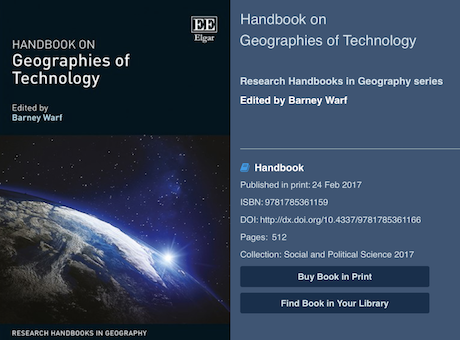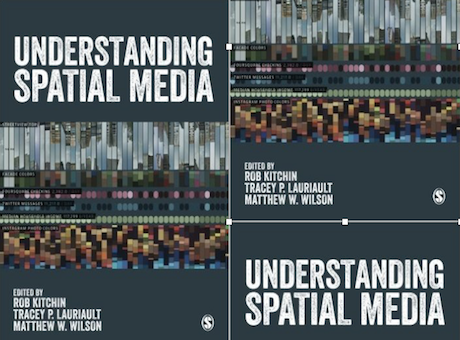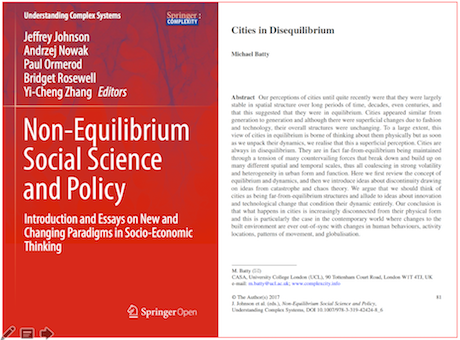Read our paper by Batty, Lin and Chen on Virtual Realities, Analogies and Technologies in Geography, where we continue to parade the idea of virtual geographic environments – VGE
From the publisher’s blurb: This Handbook offers an insightful and comprehensive overview from a geographic perspective of the numerous and varied technologies that are shaping the contemporary world. It shows how geography and technology are intimately linked by examining the origins, growth, and impacts of 27 different technologies and highlighting how they influence the structure and spatiality of society. Following summaries of important conceptual issues such as diffusion, gender and science studies, the book explores various technologies, which are grouped into six main categories:
- Computational: code, location-based services and virtual reality
- Communications: fiber optics, satellites, the internet, radio, cell phones and television
- Transportation: automobiles, aviation, drones, railroads, and shipping and ports
- Energy: biofuels, dams, fracking, geothermal energy, pipelines, solar energy and LEED buildings
- Manufacturing: robotics, just-in-time systems and nanotechnology
- Life sciences: new technologies of health care, biotechnology and biometrics.
Significantly, the book includes in-depth explorations of new technologies that have so far received very little attention from geographers. This much-needed Handbook offers a comprehensive and state-of-the-art summary of the geographies of major technologies and how they affect society, economies, geographies and everyday life. It will appeal to academics and advanced students interested in geography, planning and the social sciences in general.











